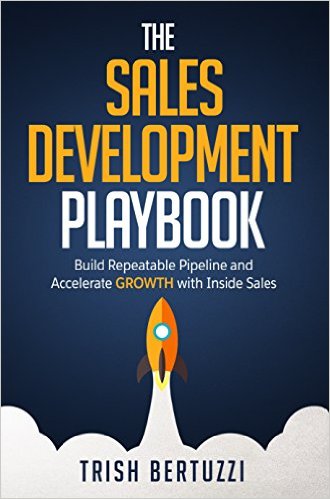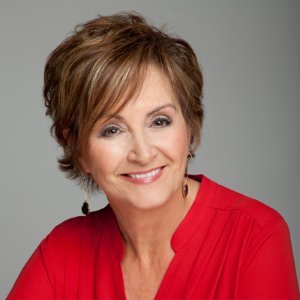The Five Whys of Sales Development
Recently, I had a conversation with the CRO of exciting SaaS startup. He had built sales development six months earlier and was frustrated with the results to date.
Prior to his current role, he was Director of Sales for a well-established, big name company. Now at a startup, he faced no name recognition and next-to-no inbound marketing support.
I asked him about the specifics of his sales development strategy and he replied, “I replicated what we had in place at BigCo. It worked extremely well there, so why not here?”
And therein lies the problem.
Sales development is not one size fits all. That conversation is far from unique—I have them all too frequently. So much so, that I created a framework to help companies think about how to implement sales development implementations.
Let me set the stage for you.
In 1925, Edward Strong, PhD, a professor of applied psychology at Stanford University, made the concept of AIDA famous. The four steps in AIDA stand for attention, interest, desire, and action. AIDA is a simple framework for thinking about the stages buyers pass through when making a business-to-business (B2B) purchase.
But nothing about B2B selling is simple anymore. To be successful today, you must align with the way your prospects think and work (often called the buyer’s journey). I’ve taken a spin on AIDA and built a five-step framework for thinking about the modern B2B buying process. I call it The Five Whys.
| PROSPECT BEFORE | PROSPECT AFTER | CORRESPONDING SALES STAGE | |
| Why listen? | Crazy busy | Curious | Introductory meeting |
| Why care? | Curious | Interested | Discovery call |
| Why change? | Interested | Active | Pipeline opportunity |
| Why you? | Active | Committed to you | Forecast opportunity |
| Why now? | Committed to you | Committed to now | A win |
As we walk through The Five Whys, put yourself in your prospects’ shoes.
Column two (Prospect Before) is where prospects start when you begin communicating with them. Column three (Prospect After) is where they hopefully end up if all goes according to plan. The final column is how the Prospect After stage aligns to a traditional sales process.
Looking at the sales process this way, we can appreciate just how much effort it takes to move a company from prospect to customer. We can also appreciate what a journey prospects have to make from “unexpected sales call” to “this is something I want to pursue” and finally to “replacing the status quo.”
There’s one piece I want you to pay special attention to. Notice just how distinct the first two whys (Listen and Care) are from the last three (Change, You, and Now).
| PROSPECT BEFORE | PROSPECT AFTER | |
| Why listen? | Crazy busy | Curious |
| Why care? | Curious | Interested |
| Why change? | Interested | Active |
| Why you? | Active | Committed to you |
| Why now? | Committed to you | Committed to now |
The final three whys (Change, You, and Now) are about gaining commitment and closing a sale. They are the domain of account executives. But take another look at the first two whys (Listen and Care). These two are about opening doors and sparking interest.
At first glance, they might seem similar, but there’s quite a bit of distance between the two.
Look, sales development is a tough job. Reps have to reach often unsuspecting (a.k.a. cold) prospects and get them to stop what they are doing and listen. That’s miles easier said than done. Think of all the people competing for your attention on a daily basis: your family, your employees, your peers, your boss, and countless sales reps trying to get “just twenty minutes on your calendar to discuss your strategy for blah blah.” Regardless of what you’re shooting for—an introductory meeting, technology demo, or fully qualified opportunity—your reps’ first hurdle is to arouse curiosity and get prospects to listen.
 The essence of your sales development strategy is deciding how far down The Five Whys your reps can and should take prospects. If you’re a big brand company then you can certainly consider having SDRs handle the first two whys.
The essence of your sales development strategy is deciding how far down The Five Whys your reps can and should take prospects. If you’re a big brand company then you can certainly consider having SDRs handle the first two whys.
But, if you are a start-up and your sales organization desperately needs at-bats, you may just want to focus on why listen. Where to draw the line is a decision that you’ll have to make and likely revisit as your team grows.
I briefly shared The Five Whys with the CRO I mentioned early. He got where I was going immediately and committed to revising his model to reflect the realities of his new market.
I suspect his SDRs will be much better set up for success team and his account executives will be happy campers with fuller calendars. All it took was embracing the fact that “doing” sales development is much less about copying and pasting bits and pieces of from other companies – and much more about choosing the right goals, plans, and actions for your unique market dynamics.
Trish Bertuzzi is author of the Amazon #1 bestselling book The Sales Development Playbook. You can find it on Amazon or download an excerpt from the book.

